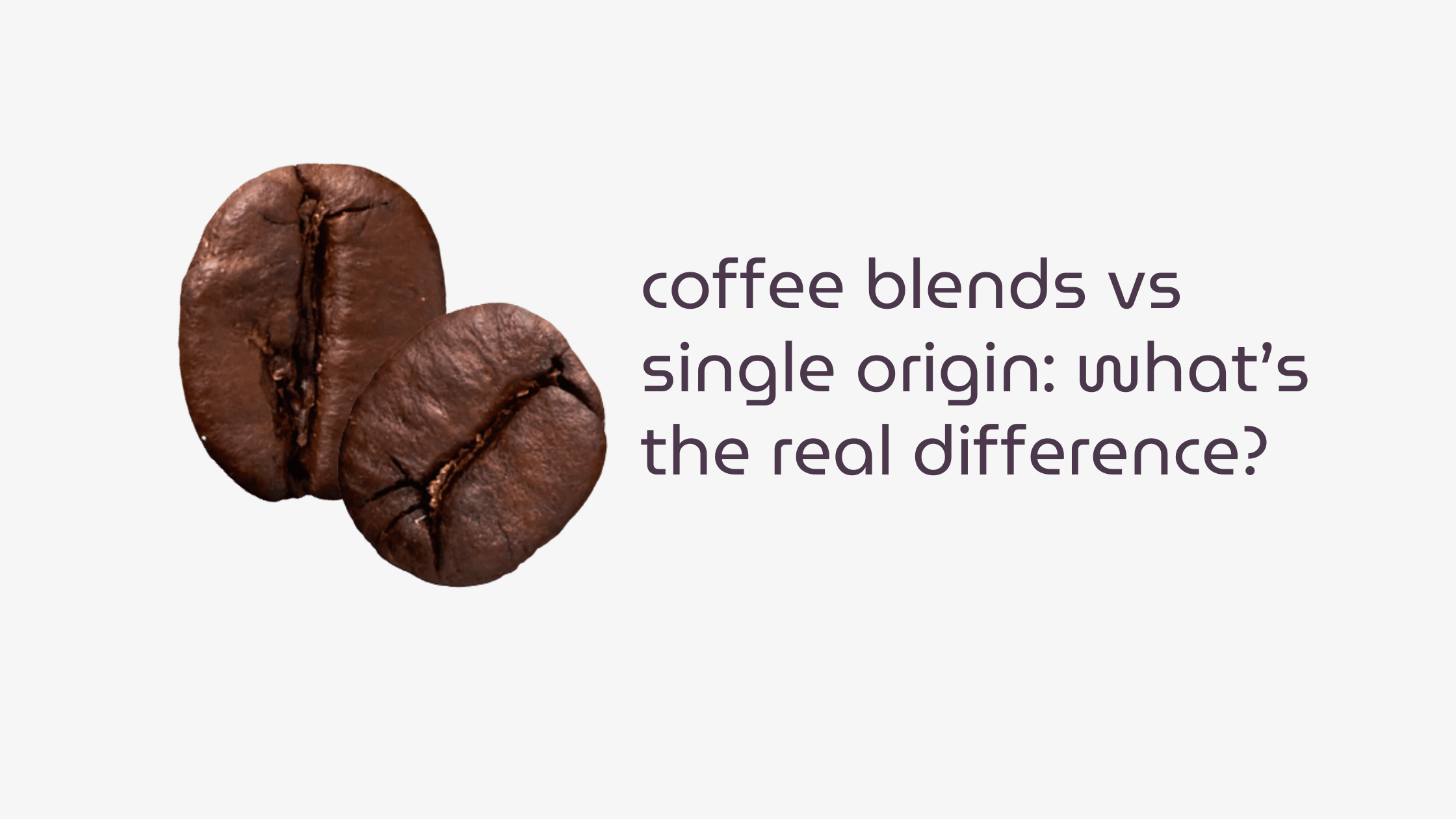
Coffee Blends vs Single Origin: What’s the Real Difference?
Not sure whether to buy a blend or single origin? Learn how each is sourced, how they taste, and when to choose one over the other for your perfect brew.
If you’ve ever browsed a specialty coffee menu and felt unsure about the difference between coffee blends vs single origin options, you’re not alone.
At first glance, they both sound promising—maybe even interchangeable. But under the surface, these two categories represent distinct philosophies in how coffee is sourced, roasted, and enjoyed.
In this guide, we’ll break down the real difference between coffee blends vs single origin coffees—how they taste, how they’re made, and how to choose what works for your routine.
What Is Single Origin Coffee?
Single origin coffee is exactly what it sounds like: beans that come from one country, one region, and often one specific farm or cooperative. These coffees are all about traceability, seasonality, and flavor purity—you’re tasting the character of a specific place, unblended and unmasked.
That could mean bright citrus from Ethiopia, deep chocolate from Colombia, or stone fruit and florals from Guatemala. The profile is often more expressive and sometimes more surprising than a blend.
- Sourced from one origin
- Flavor reflects the terroir
- Often seasonal or limited release
- Great for pour-over or black coffee lovers
👉 Learn more in our Single Origin Coffee Guide or dig into our primer: What Is Single Origin Coffee? A Beginner’s Guide
What Is a Coffee Blend?
Blended coffee combines beans from two or more origins to achieve a specific flavor profile. Think of it like a culinary recipe—a roaster might mix a chocolatey Brazil with a fruity Colombia to create something that’s smooth, balanced, and consistent year-round.
Blends are designed to complement, balance, and round out flavor—often tailored to drink well with milk, shine in espresso, or offer a mellow all-day brew.
- Sourced from multiple origins
- Balanced, smooth flavor
- More consistent across batches
- Great for espresso and milk-based drinks
You’ll find this approach in our own Signature Blends.
How Do They Compare?
| Feature | Single Origin | Blend |
|---|---|---|
| Source | One country or region | Two or more origins |
| Flavor | Unique, expressive, sometimes bold | Balanced, smooth, often chocolatey |
| Consistency | Can vary by season or crop | Designed for consistency |
| Transparency | High (often traceable to the farm) | Varies depending on the roaster |
| Roaster’s Goal | Showcase terroir and uniqueness | Build a reliable, crowd-pleasing cup |
| Great For | Black coffee, slow brewing | Espresso, lattes, daily routines |
When Should You Choose a Single Origin?
Go with single origin when you want to:
- Explore the taste of a specific country or farm
- Brew with methods like pour-over, Chemex, AeroPress
- Enjoy bright, fruity, or floral flavor notes
- Try something limited, seasonal, or small-batch
- Support traceable sourcing and regional storytelling
Single origin coffees are a great way to explore the diversity of flavor in coffee.
When Should You Choose a Blend?
Reach for a blend when you want:
- A consistent cup from day to day
- A smoother, more chocolate-forward profile
- Coffee that works well with milk or sugar
- Something dialed in for espresso
- A reliable “house coffee” you can return to
If that sounds like your vibe, try Happi Smooth for mellow caramel or Happi Bold for a darker, richer cup.
Can You Have the Best of Both?
Absolutely. Many roasters (us included) take the best of both approaches: sourcing traceable, high-quality beans and blending them with purpose.
At Happi, our blends aren’t just leftovers or filler—they’re crafted from thoughtfully selected origins, roasted fresh, and balanced to shine in your daily routine.
So while single origin coffee might be a showcase piece, a great blend can be your everyday favorite.
Conclusion
There’s no wrong choice when it comes to coffee blends vs single origin—just different paths to delicious.
If you want to explore, start with a single origin that speaks to your flavor preferences. If you’re building a morning ritual, find a blend that feels like home.
Or better yet—keep both in rotation. That’s what we do.
👉 Explore our Single Origin Coffees
👉 Shop our Signature Blends
0 comments